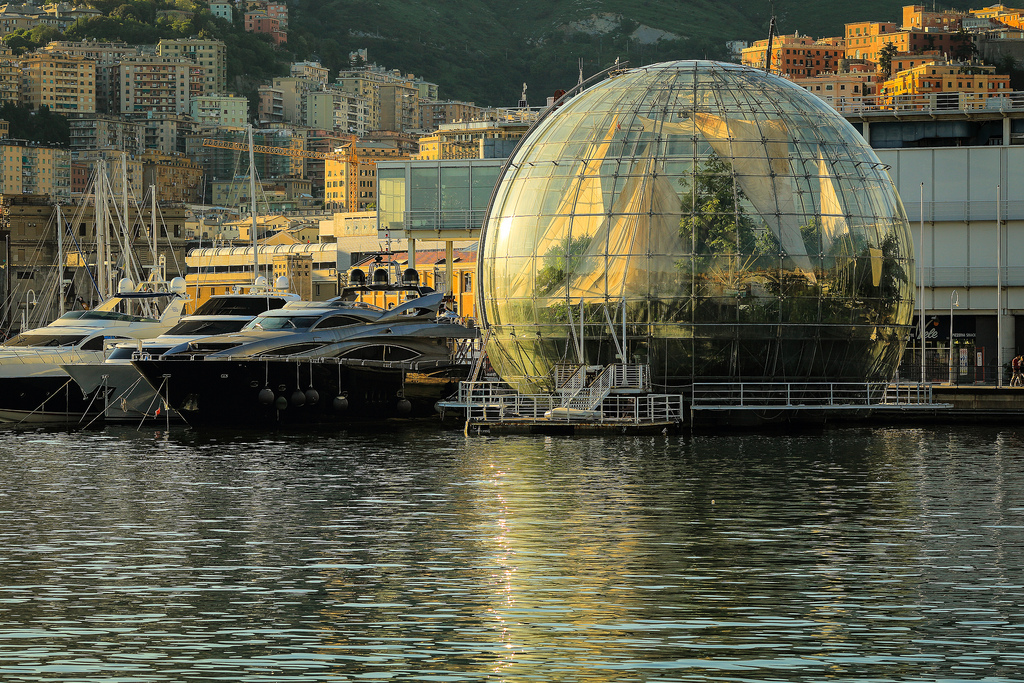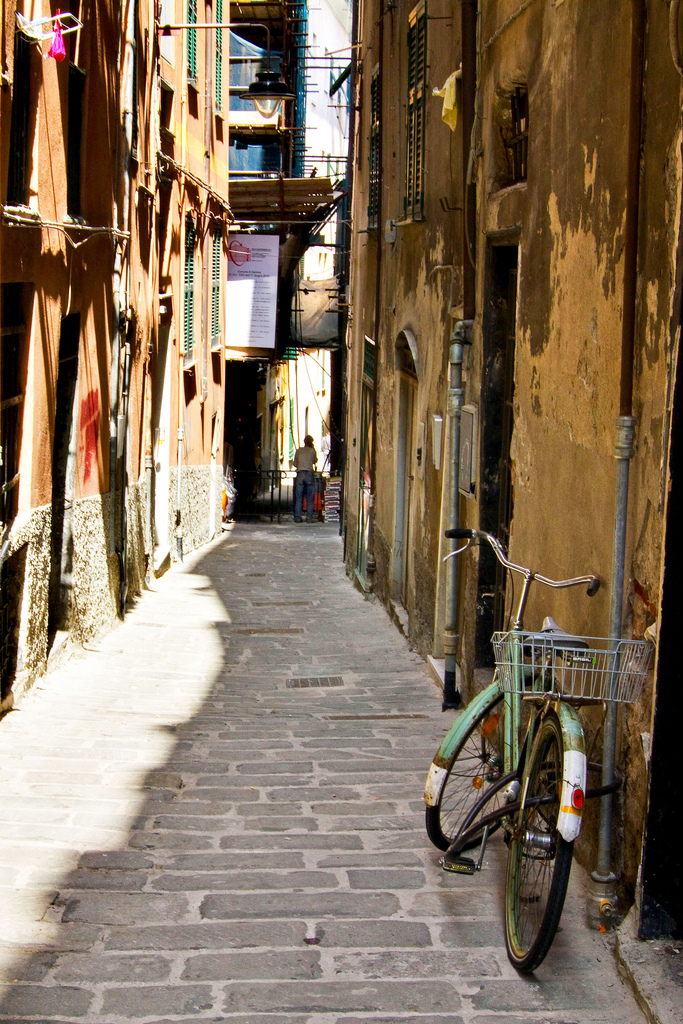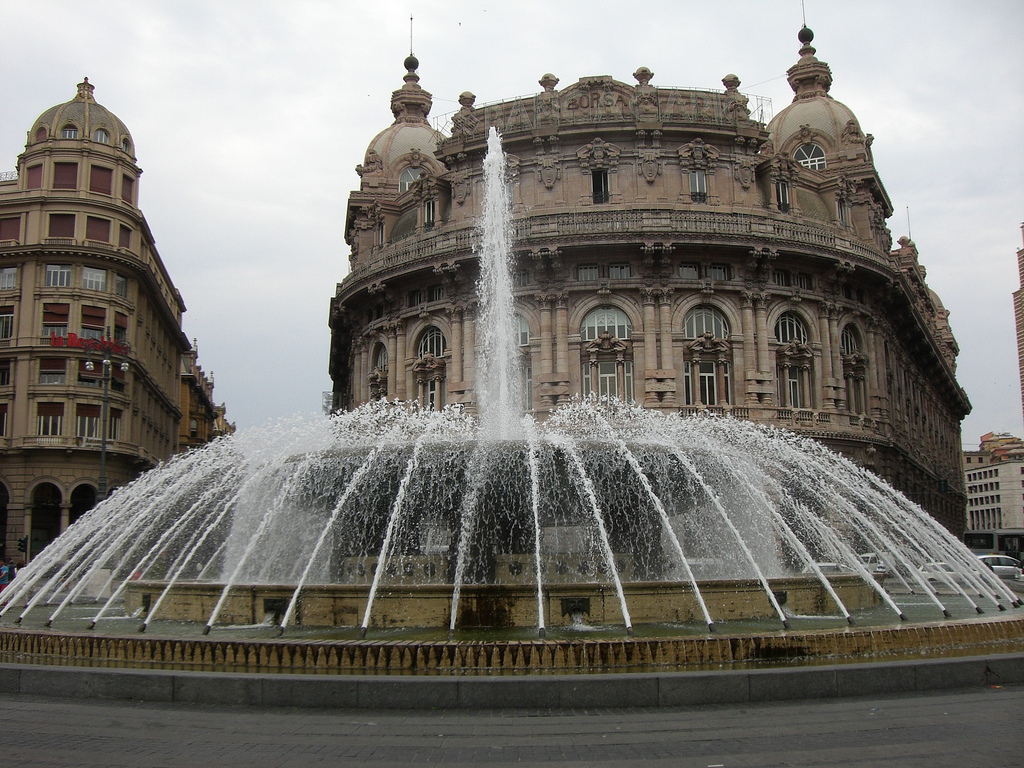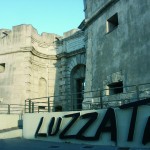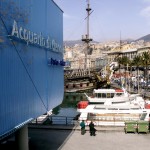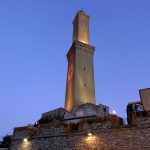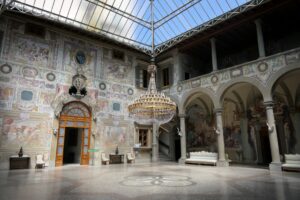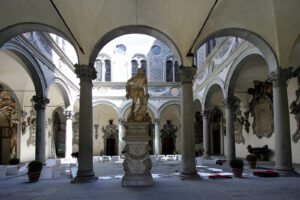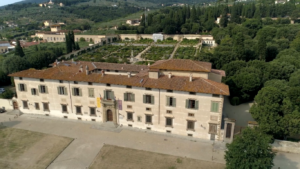Meet this great Italian artist
Genoa, where past and future meet
Have you ever heard about carruggi?
The region Liguria is an amazing stripe of land, between mountains and sea. You can visit Liguria coming both from the sea and from the land, by boat, by train, on foot. There is too much to say about this place, there are so many landscapes and treasures to discover. Let’s start talking about Genoa.
Genoa’s dock
Our slow tour starts in the citycentre of Genoa, at the Darsena area just next to the Ancient Port. Italian post war architecture made a lot of ugly things, but this Darsena is different. It has been recently restored taking advantage of events like “Genoa as European Capital of Culture” in 2004. Old world and new world meet here, so that you can find some cafés, the University, a museum, the Aquarium and even a submarine all together one next to the others.
The most curious thing is the submarine Nazario Sauro, launched in 1976, then retired as a naval instrument and towed here from the naval dockyard in La Spezia. The submarine is opened to the public and you can see how the crew used to live on board. You can even listen the sounds recorded on board. Beside the military purposes, a submarine is striking for the incredible technological research that it represents. Actually, the submarine Nazario Sauro is a property of Galata Sea Museum, just next.
The Galata Sea Museum
The Galata Sea Museum gathers past and future together, with a scale model about Genoa imagined by Renzo Piano. The Museum was designed by the Spanish architect Consuegra and it was built by recycling old construction yards, where the galleys of the Maritime Republics used to equip.
At the entrance there are a plastic model of one of Columbus’ caravels, a traditional fishing boat and the inevitable gift shop. Then, you can admire the full size reconstruction of a galley equiment, set up with mannequins, suits of armour and cannons. Awesome.
The museum’s payoff is “get on board”, and it definitely happens. Looking at the reconstructions of these old boats, you understand widely how and where the oarsmen were put in chains, night and day: many of them died because of the cold and the efforts, an inhuman torture. Genoese people used to build ships lasting longer than the Venetians, untill 30 years old. They had to care a bit more their oarsmen, because they were a resource.
Emigrants and immigrants
The Galata Sea Museum has got three different floors, full of interesting things like the full size reconstruction of a 19th century ship, or a gallery full of rare pictures. To get into the third floor you have to pick up a passport as migrant! Then you follow an itinerary dating back to the 19th/20th centuries during emigration times to Americas.
Your passport defines your personal history and what kind of migrant are you (choosing between the hungry farmer, the unemployed worker, the anarchist on the run and so on…). Then you physically get into a ship reconstruction. The aim is to prove that we have all been migrants!
The Galata Sea Museum is working to place here in the museum one of those big barge from Lampedusa, one of those upon which modern migrants come to Italy. We were migrants, they are immigrants, a common fate. The message couldn’t be more clear. At the Galata Sea Museum, the history of navigation passes through the histories of men. Really worth seeing.
Greed or not?
Genoa seems to be full of graveyards. Why? The city looks like a confederation of different urban groups, each one with its own strong identity. Everyone is very close to his origins and does not accept to be buried far from home. Genoveses have a special cult of the dead and they give special attention to burials.
We have been told by some Genoeses in person about their wellknown avarice and the wish to bring all their properties with them after death. The only way to withhold their own wealth is to build a magnificent grave. As a matter of facts, the Monumental Cemetery of Staglieno, one the most beautiful monumental cemeteries all over the world, stands here! It is even more beautiful than the famous Père Lachaise in Paris. The most famous grave of this cemetery is the one of a poor peanut seller, who put aside a fortune just to have a magnificent grave built, with an amazing statue that represents herself on top.
The Monumental Cemetery of Staglieno stands in the green hills, an amazing location. It develops in a very large area, across a forest. You can reach it with two different underground lines. Both the atmosphere and the view are beautiful: it’s not a coincidence that tourists like Nietzsche, Guy de Maupassant and Mark Twain have mentioned the Monumental Cemetery as the most fascinating excursion they took in Genoa.
Please, come in
In the Monumental Cemetery of Staglieno there are many celebrities buried: you can find Mazzini, Nino Bixio, Gilberto Govi, Fabrizio De Andrè, and some of the “Garibaldi’s Thousand”. It can be considered as an outdoor art exhibition. The various 19th century graves are some perfect bourgeois realism masterpieces: hyper-realistic statues of faces, people, clothes and even attitudes in every minute detail. These statues dust-covered seem to need a cleaning up… But dust makes them almost velvety.
What strikes the most is the Pantheon, where famous Genoeses are buried. Many graves here are still empty, waiting for future famous people from Genoa. While we were visiting, they were preparing the grave of a major who stood out for social credits, after the city council has bestowed him the honour to be buried here. This makes me think about a city with a very strong identity, a community that celebrates the past and in the meantime is looking towards the future, cultivating future “heroes”.
Let me introduce you Bacci Pagano
The touristic side of Genoa is limited, from the Ancient Port and Caricamento Square to Via Garibaldi. This city area arises through a lot of tiny streets, known as the popular Caruggi. Please, don’t mistake caruggi with crose: crose are lager street which separate two different peripheral areas, while caruggi are tight streets separating buildings of the citycentre. In the past caruggi were larger and there were many shops, covered by cloisters.
Your adventure through the caruggi needs a special guide. You can often imagine the big cities through literature and writers’ words: so did Jean Claude Izzo for Marsiglia, Manuel Velasquez Montalban for Barcellona through the detective Pepe Carvalho and Alicia Gimenez Bartlett through the detective Petra Delicato… Bruno Morchio told us about Genoa through the character of Bacci Pagano called “the rat of the Caruggi”, always ready to take part in the deceptions of the old town. Bruno is a psychologist and a famous author of whodunits.
A multiethnic city
I made a tour of Genoa with the writer Bruno Morchio, who told me about its historic organization and its ethnic variety. Walking along Via Prè we met people from all over the world: Africans, Indians, Chinese… You could pretend to be travelling around the world!
One day, I was walking together with my daughter Zoe from the train station of Porta Principe to Caricamento Square, suddenly we find us… in Dakar. We were the only white people in a community of black people. We felt good, there were no tensions, only liveliness and cheerfulness. Further on, we find us into Chinatown, and there were some Muslim women walking around. Then we seated at an Ecuadorian restaurant (the widest Ecuadorian community in Europe seems to be here in Genoa!).
Genoa has got a big harbour, it is not strange that people come here from everywhere in the world. But how are all they living here without contrasts? Thanks to the Caruggi, explains Bruno Morchio: when the old town began to degrade, the locals moved from there and the immigrants took their place, carrying here their liveliness. After a while the locals came back to the city centre.
Nowadays different people live side by side in the typical high and tight houses: immigrants, young couples, students and also wealthy people. Of course, the immigrants stand at the first floor… Speaking like his character Bacci Pagano, Bruno mischievously said that Genoeses are so closed-minded to become some kind of “democratic racists”: they consider foreigners even people coming from the near cities of Pordenone or Cuneo, so a man from Ghana is a foreigner as well as a man from Italian region Tuscany…
It’s all about Pesto
When I asked Andrea Della Gatta (President of the “Pesto sauce Association”) to teach me the recipe of pesto sauce “Genoa style”, he immediately specified the difference between the Genoese pesto, prepared exclusively here in Genova, and the pesto sauce “Genoa style”, just an imitation.
Both ingredients and cooking process are crucial in the preparation of Genoese pesto. Speaking about ingredients, you must choice only basil and garlic grown in the region Liguria. The taste of this special basil really holds the sea and the mountains of this area, while the local garlic is far more agreeable and less invasive than the common one. The pine nuts have to be from Italy. Even the olive oil should be produced in Liguria, known as very light. Then you add Parmesan cheese (someone prefers the Grana Padano, more delicate) and Pecorino (Italian sheep cheese).
“How to”: find a rough marble mortar, starting by basil put all the ingredients in it, mix pressing the leafs into the mortar’s wall. The Pesto is ready to be served as a sauce for pasta, with optional green beans and potatoes.
Recently Silvio Berlusconi declared that he doesn’t really love pesto, because he can’t put up with garlic. His popularity in Liguria collapsed.
Pics credits
Genoa Saint Lorenzo Cathedral (main pic) by Fabrizio Binello (Flickr user)
Genoa, Old Harbour and Aquarium by Roberto Taddeo (Flickr user)
Genoa, old caruggi streets by Artur Staszewski (Flickr user)
Genoa, De Ferrari square by Lanzate (Flickr user Lanzate21)
Visit Genoa: helpful hints
Italian name: Genova
Arrivals
The Genoa Airport is an international airport, 30 minutes far from the city centre and connected by Volabus (ticket 6€). For transcontinental flight the nearest airport is Malpensa, Milan. From Malpensa, first you have to reach Milan Central Station by train or by bus (the train Malpensa Express leaves every 30 minutes, it takes 50 minutes and costs 13€. The bus Malpensa Shuttle leaves every 20 minutes, it takes 60/70 minutes and costs 10€). Then, there are many trains from Milan Central Station to Genoa, it takes about 1h 30.
Transports
The best way to move around Genoa is by bus. Single ticket 1,5€ for 100 minutes ride. There are many types of tickets, full explained on the A.T.M. Website. A characteristic way of transport you should try is the Funicolare di Sant’Anna (single ticket 0,90€).
What to do
Genoa is the capital city of Liguria region, North Western Italy. From Genoa you can reach many beautiful places on the seaside all along the charming Ligurian Riviera, especially the iconic Portofino. But also the city itself, it is very interesting! The area of the Old Harbour, for exemple, where is the huge Aquarium famous worldwide, and where takes place every September the most important Boat Fair in Italy (and in the Mediterranean area at all) called simply Salone Nautico.
Genoa is precious also for its heritage: Le Strade Nuove and the system of thePalazzi dei Rolli are UNESCO World Heritage Sites. You should also see the fishing village of Boccadasse. Plan your trip with Italia Slow Tour tips: watch our web serie about Genoa and discover more about this wonderful city.
Where to sleep
The best area to book a place is the centre of the city, since the suburbs are less safe. Another great place to sleep is near XX Settembre street.

